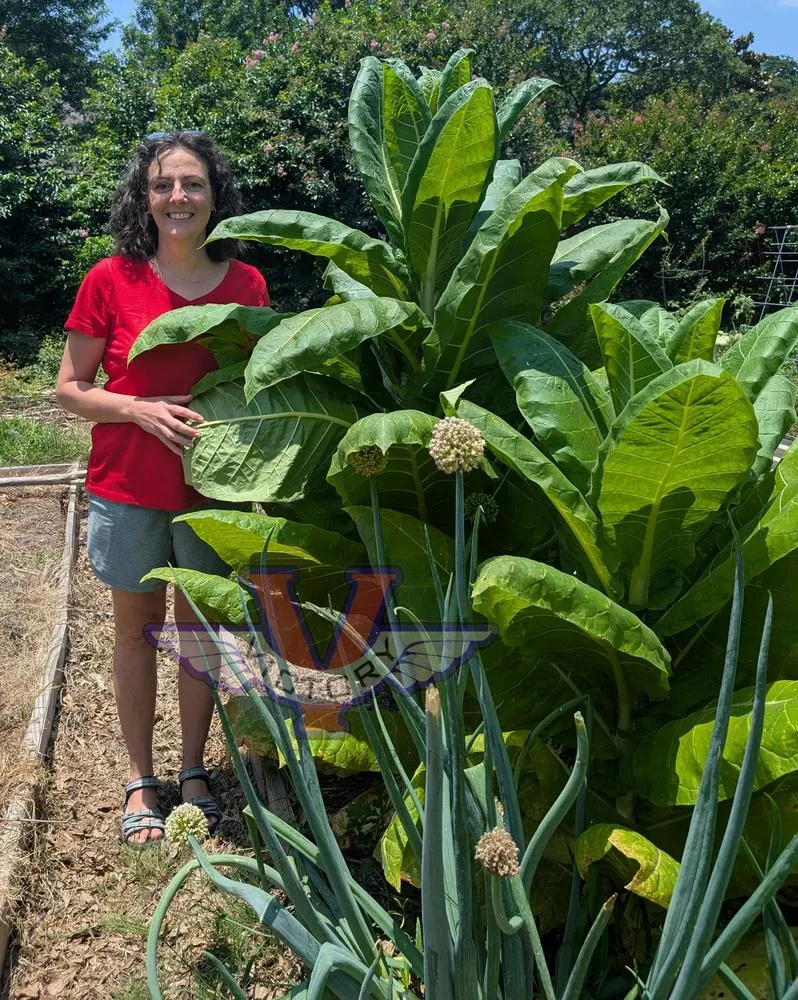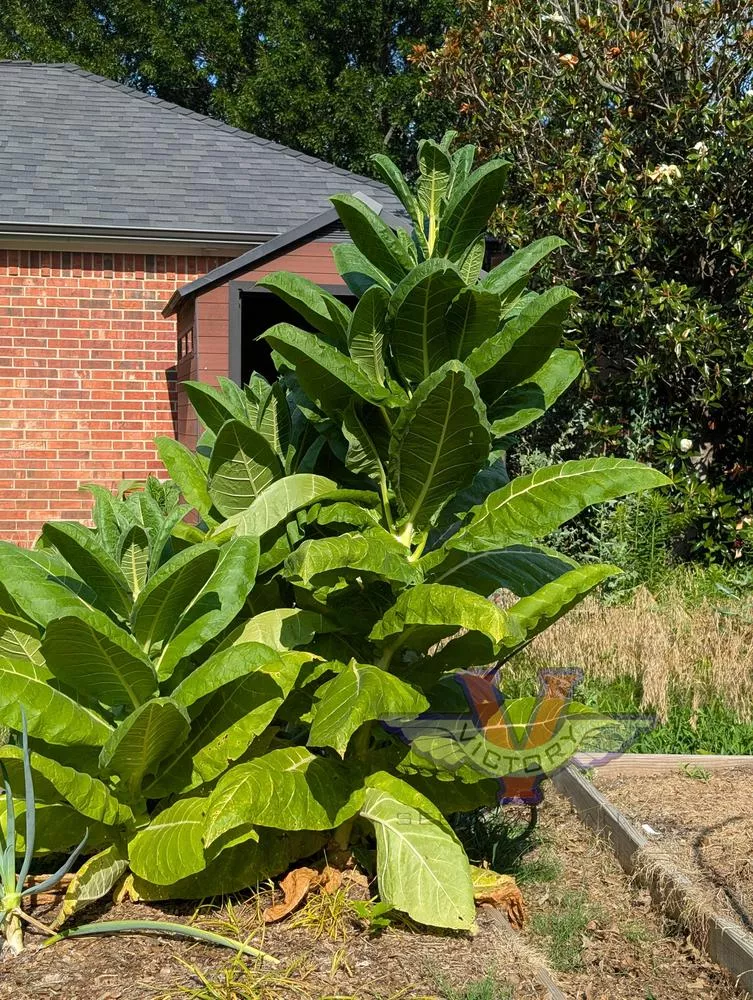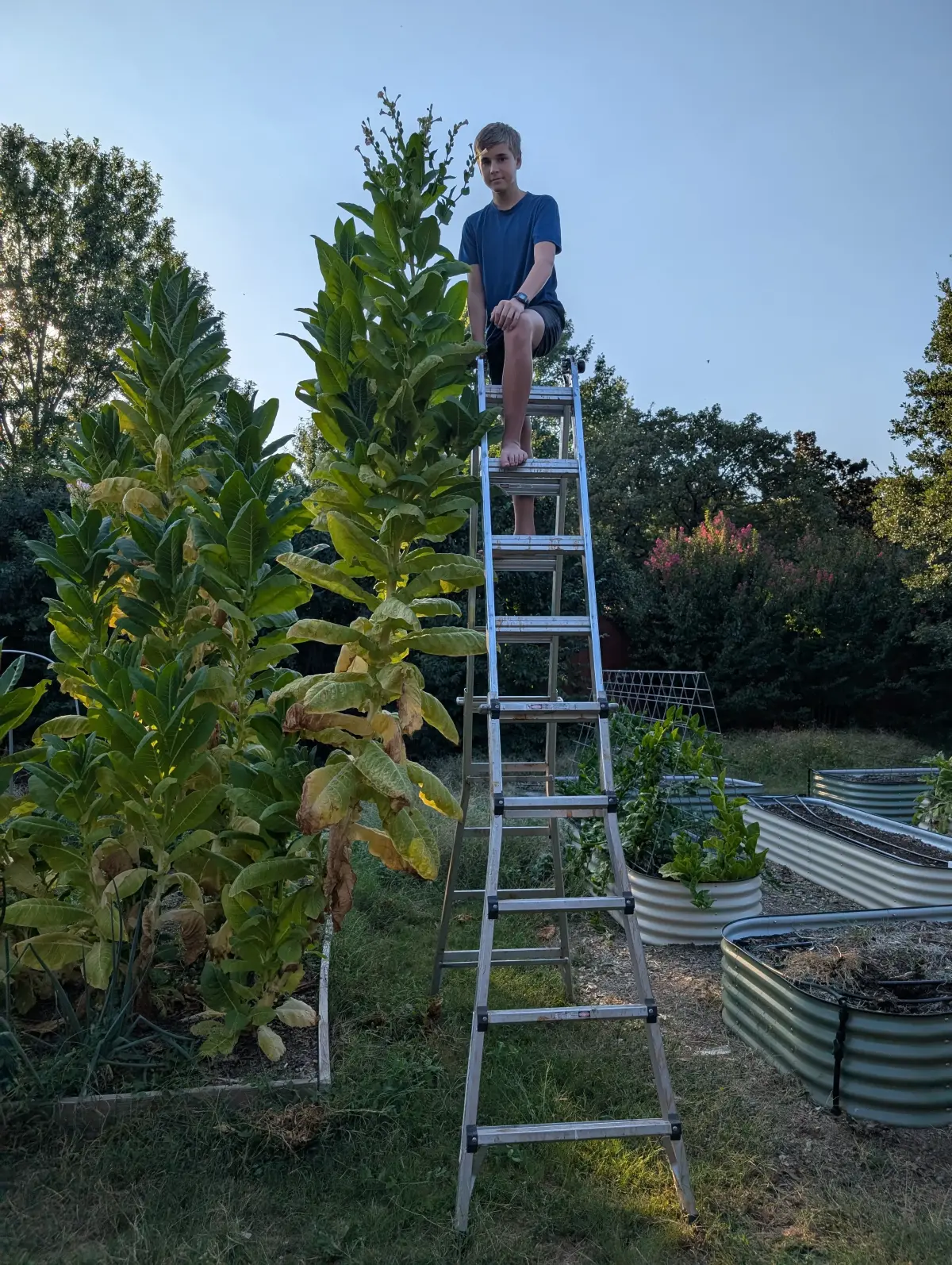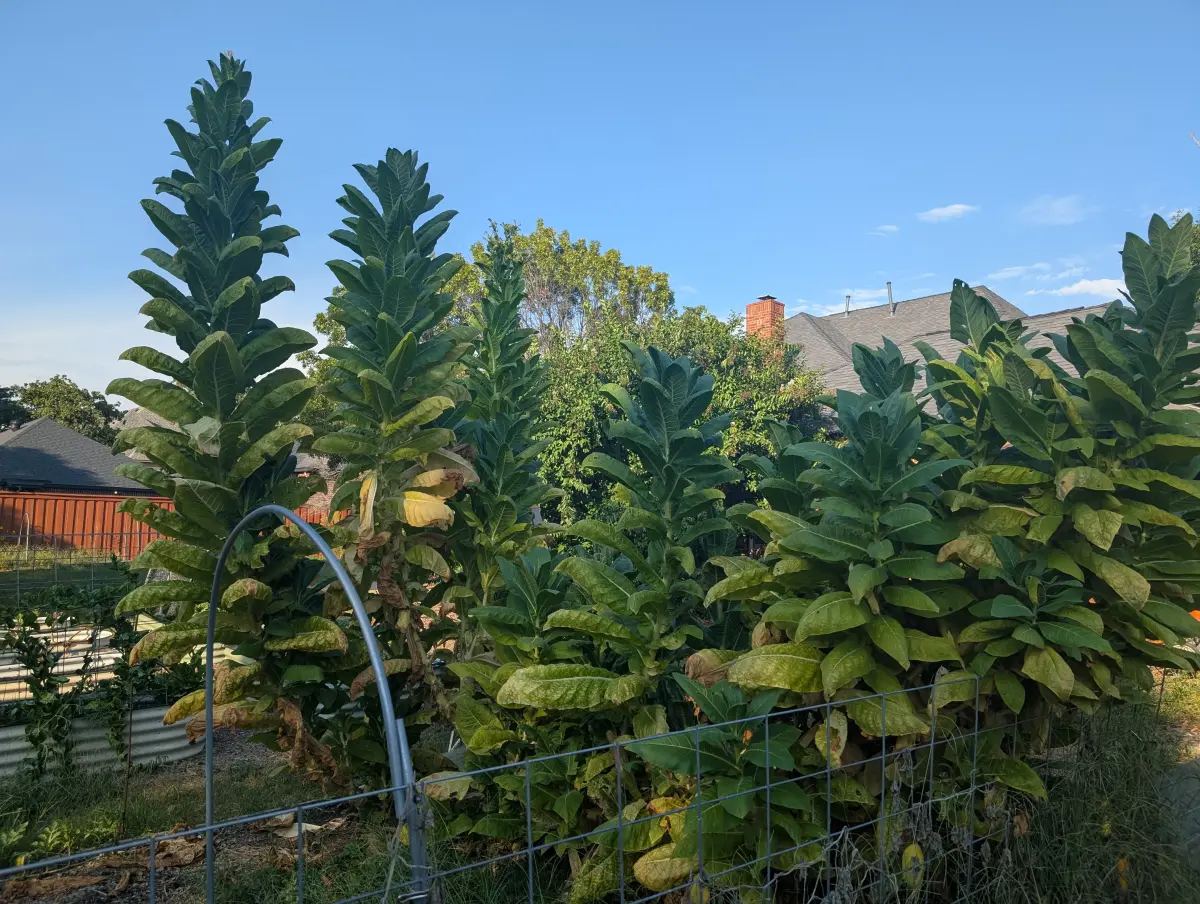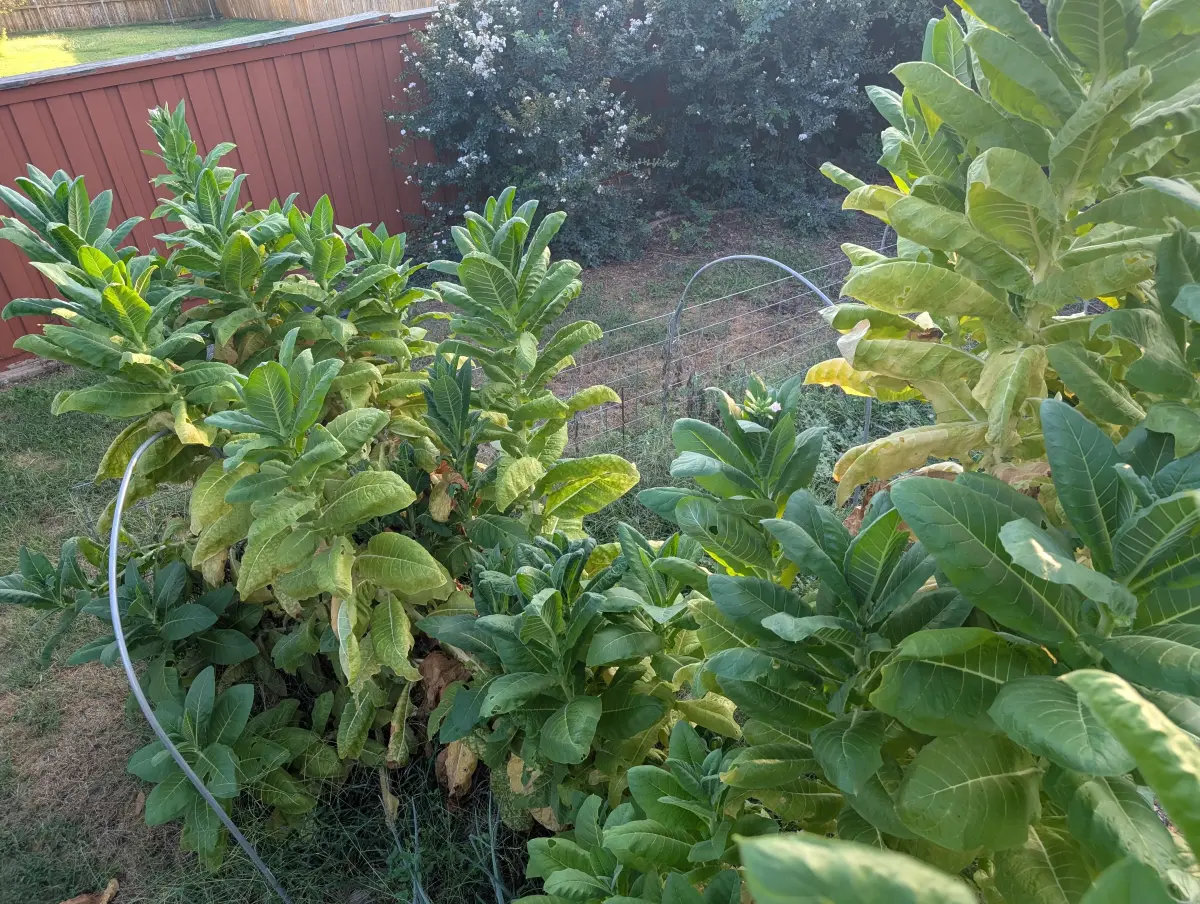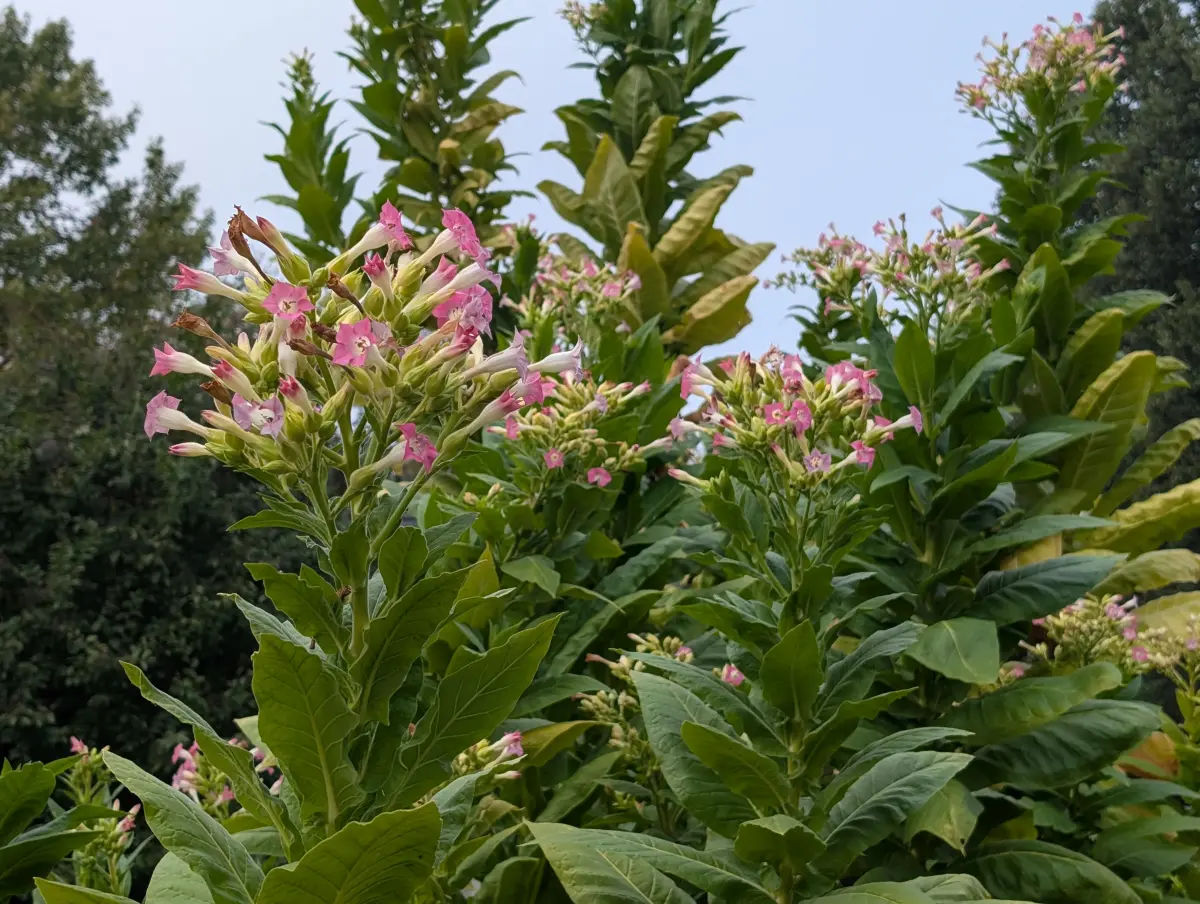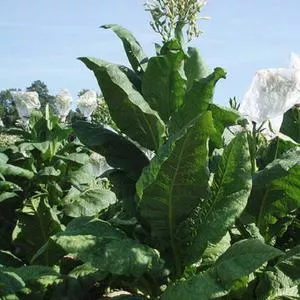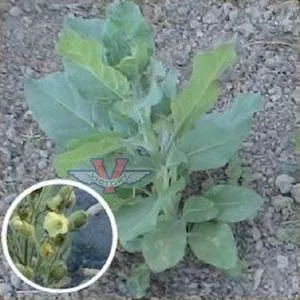





Burley Mammoth (aka KY16) Tobacco
Nicotiana tabacum
Price: $4.99
SKU: 1001571Also known as 'KY 16', 'Burley Mammoth', as its name implies, is a Burley-type tobacco and historically used for cigarette blends. It exhibits day-length sensitivity, known as photoperiodism, and requires days with less than fourteen hours in order to trigger its blooming period. As such, its pink flowers are rarely seen in the summer months and if you are raising it for seed, you will need to be in location with a long growing season.
Since the plants continue to grow for a long period of time without flowering, 'Burley Mammoth' does become quite tall unless it is topped to slow its growth. If you refer to the photo of "Farmer Dave" above,the plant in the foreground was topped earlier in the season and it is ripe and ready to harvest. Over his left shoulder is a tall, bright green plant that was not topped and is far from being ripe.
Developed as a cross between 'Wisconsin Burley' with 'Burley 5', our seed originated from USDA accession number PI 552366 donated in 1961 by Kentucky Seed Improvement Association. Our 'Burley Mammoth' seed was was originally sent to us by tobacco variety preservationist, David Pendergrass of Middle Tennessee.
Since the plants continue to grow for a long period of time without flowering, 'Burley Mammoth' does become quite tall unless it is topped to slow its growth. If you refer to the photo of "Farmer Dave" above,the plant in the foreground was topped earlier in the season and it is ripe and ready to harvest. Over his left shoulder is a tall, bright green plant that was not topped and is far from being ripe.
Developed as a cross between 'Wisconsin Burley' with 'Burley 5', our seed originated from USDA accession number PI 552366 donated in 1961 by Kentucky Seed Improvement Association. Our 'Burley Mammoth' seed was was originally sent to us by tobacco variety preservationist, David Pendergrass of Middle Tennessee.
Main Tobacco Role: blending
Typical Use: cigarette
Tobacco Type: Burley
Number of Leaves: 16-20
Suckering Tendency: Medium
Days to Maturity: 65
Lifespan: Annual
Sun Requirements: Full Sun
Best sowing Method: Start Indoors
Bloom Color: Pink
Genetic Classification: Open Pollinated
Typical Use: cigarette
Tobacco Type: Burley
Number of Leaves: 16-20
Suckering Tendency: Medium
Days to Maturity: 65
Lifespan: Annual
Sun Requirements: Full Sun
Best sowing Method: Start Indoors
Bloom Color: Pink
Genetic Classification: Open Pollinated
Tobacco plants are very interesting, ornamental, and have many uses apart from consumption. Tobacco seeds are not classified as tobacco products. We promote the cultivation of tobacco plants, but we do not promote the use of tobacco products.
Tobacco seeds are tiny and look like dust, but each one has the potential to quickly grow into a huge tobacco plant. They need light to germinate. Sprinkle the seeds onto the surface of a moist and sterile seed starting mix. Do not cover the seeds. They also must never be allowed to dry out, so they are frequently (but gently) watered using a mist from a spray bottle. While waiting for germination, it can help to cover them with some kind of plastic sheeting to help hold moisture.
Once tiny seedlings emerge, you can pick them out one by one and move them into individual cells. Very lightly fertilize and never allow the potting soil to dry out. Within 6 weeks it'll be ready to plant in the garden. Wait until all risk of frost is over before planting outdoors.
For additional information, please have a look at our more detailed guide with photos.
Once tiny seedlings emerge, you can pick them out one by one and move them into individual cells. Very lightly fertilize and never allow the potting soil to dry out. Within 6 weeks it'll be ready to plant in the garden. Wait until all risk of frost is over before planting outdoors.
For additional information, please have a look at our more detailed guide with photos.
Customer Reviews:
Do you have experience with this one? 📝 📣 Write a review!
No reviews have been posted yet.

